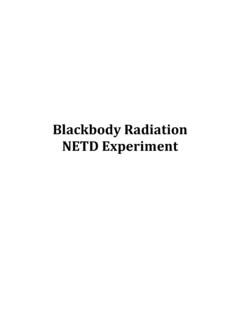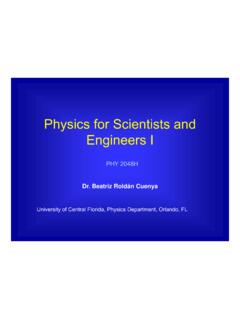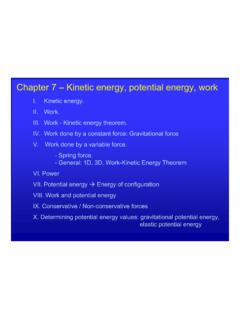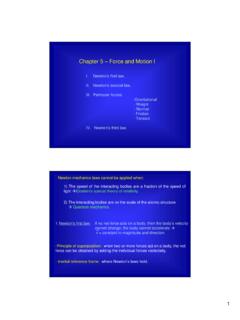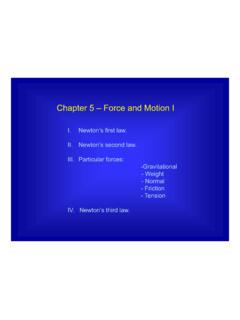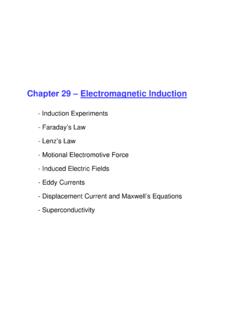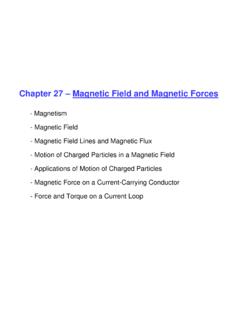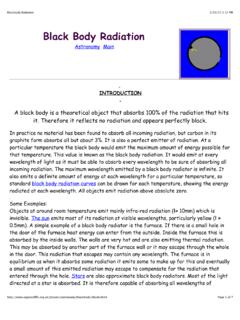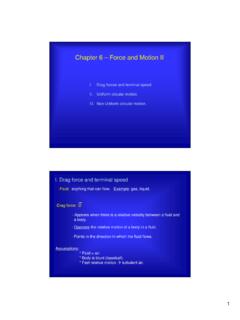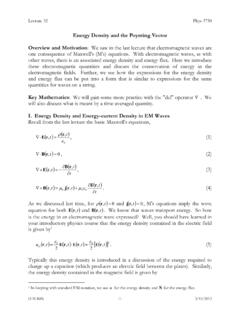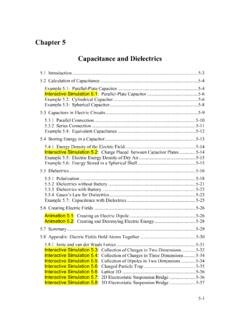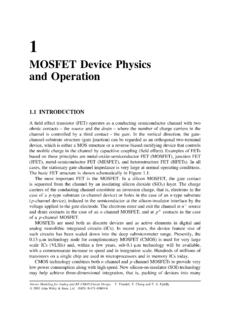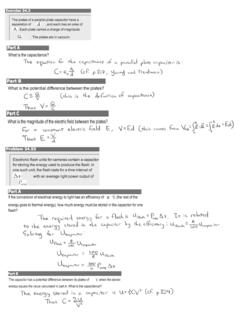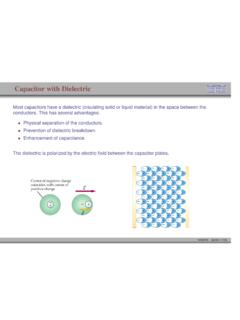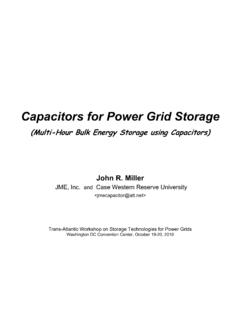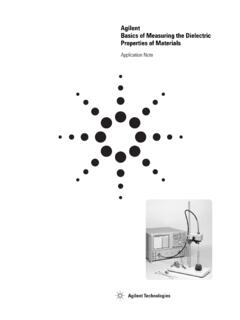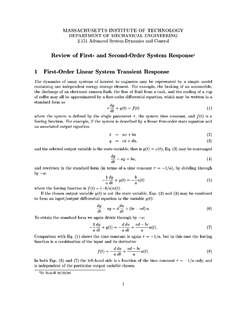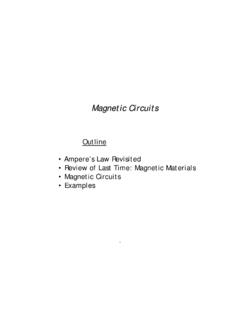Transcription of Chapter 24 – Capacitance and Dielectrics
1 Chapter 24 Capacitance and Dielectrics - capacitors and Capacitance - capacitors in series and parallel- Energy storage in capacitors and electric field energy- Dielectrics - Molecular model of induced charge- Gauss law in dielectrics1. capacitors and CapacitanceCapacitor:device that stores electric potential energy and electric charge. - Two conductors separated by an insulator form a capacitor. - The net charge on a capacitor is zero. - To charge a capacitor -| |-, wires are connected to the opposite sides of a battery is disconnected once the charges Q and Q are established on the conductors. This gives a fixed potentialdifference Vab= voltage of :constant equal to the ratio of the charge on each conductor to the potential differencebetween :1 Farad (F) = Q/V = C2/J = C2/N m- Capacitance is a measurement of the ability of capacitor to store energy(V = U / q).
2 capacitors in Vacuum- Parallel Plate Capacitor: uniform electric field between the plates, chargeuniformly distributed over opposite surfacesAQEoo ==dAVQCab0 ==AQddEVoab 1= = 0= x 10-12F/m- The Capacitance depends only on the geometry of the capacitors in Series and ParallelCapacitors in Series:- Same charge (Q). Vab= Vac+ VcbEquivalent capacitor212121111 CCQVQVCVVQVQC eqabeq+=+= +== capacitors in Parallel:- Same potential V, different charge. Q1= C1V1Q2= C2V2212121 CCVQVQCVQQVQC eqabeq+=+= +==Equivalent capacitorQ = Q1+Q23. Energy Stored in capacitors and Electric-Field Energy- The electric potential energy stored in a charged capacitor is equal to theamount of work required to charge = ==CQdqqCdWWQW21200 = ==Work to charge a capacitor:- Work done by the electric field on the charge when the capacitor If U = 0 for uncharged capacitor W = U of charged capacitor22222 QVCVCQU===Potential energy stored in a capacitor:Electric-Field Energy:- A capacitor is charged by moving electrons from one plate to requires doing work against the electric field between the plates.
3 Energy density : energy per unit volume stored in the space between the plates of a parallel-plate =dAC0 =dEV =dACVu =221 Electric Energy density (vacuum):- Non-conducting materials between the plates of a capacitor. They change the potential difference between the plates of the capacitor. 4. Dielectrics -The dielectric layer increases the maximum potential difference between the plates of a capacitor and allows to store more breakdown: partial ionization of an insulating material subjected to a large electric constant (K):0 CCK=C = Capacitance with the dielectric inside the plates of the capacitorC0= Capacitance with vacuum between the plates- If Q = constant Q = C0 V0 = C V C/C0= V0/VKVV0=- No real dielectric is a perfect insulator always leakage current between charged plates of a capacitor with a Charge and Polarization:Field lines change in the presenceof Dielectrics .
4 (Q constant)KEE0=E = field with the dielectric between platesE0= field with vacuum between the plates- E is smaller when the dielectric is present surface charge density smaller. The surface charge on conducting plates does not change, but an induced chargeof opposite sign appears on each surface of the dielectric. The dielectric remains electrically neutral (only charge redistribution).Polarization: redistribution of charge withina induced surface density in the dielectric of a capacitor is directly proportional to the electric field magnitude in the material. Net charge on capacitor plates: ( - i) (with i = induced surface charge density )00 =E00 iKEE == =Ki11 Induced surface charge density :Permittivity of the dielectric:0 K= =EdAdAKCKC == =00 Capacitance of parallel platecapacitor (dielectric present):Electric energy density (dielectric present):2202121 EEKu == Electric field (dielectric present):A very strong electrical field can exceed the strength of the dielectric to contain breakdown:5.
5 Molecular Model of Induced ChargePolar moleculeNon-polar moleculeInduced dipole Polarization and Electric Field LinesPolarization of a dielectric in electric field gives rise to bound chargeson the surfaces, creating i, - neutral sphere B in the radial electric field of a positively charged sphere A is attracted to the charge because of )( AQEA iencl ==6. Gauss s Law in Dielectrics00)( AQEA iencl ==0 KAEA = =Ki11 0 AKEA =Flux through Gaussian surface (enclosed free charge / 0)Gauss Law in a dielectric: 0 freeenclQAdEK =
